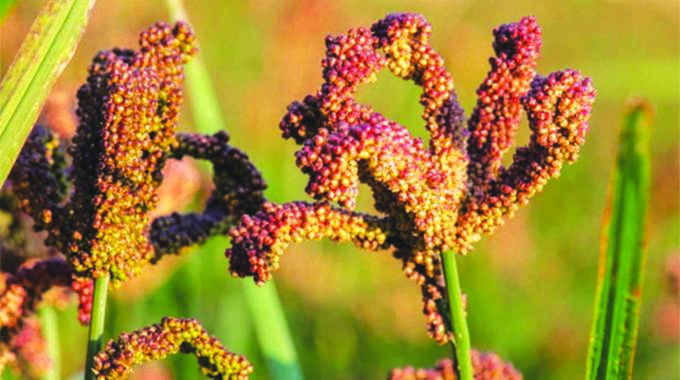
The Sunday Mail

Word from the market with AMA
In the face of climate change, crops such as sorghum, pearl millet and finger millet offer a unique opportunity for rural farmers especially those in the drier regions to sustain their livelihoods.
According to the NDS1 report, the number of people confronted with food insecurity ranged from 500 000 in 2015 to 1.7 million in 2020.
The major cause of this huge increase is the effects of climate change that include recurrent droughts, prolonged mid-season dry spells which all lead to massive crop failure.
Despite the erratic rainfall conditions, most of the rural farmers in dry regions of the country continue to opt for the moisture demanding maize crop ahead of the resilient traditional grains.
There is an overall decrease in hectarage put under small grains of 31 percent to 526415ha compared to last year as captured by the first round of the crop and livestock assessment report. One of the major reasons why farmers shun production of these crops is owing to lack of support from consumers across the country.
It is important for the nation to embrace the consumption of small grains not just as a nutrient benefit but to support the rural farmers.
The market drives production, and without justifiable returns farmers will shun the crops.
During a crop assessment carried out by AMA across the country, Francis Makowere, a cotton farmer in pengashed in Chiredzi district underscored the importance of small grains.
He highlighted that had he not grown pearl millet, his household would have been faced with hunger owing to erratic rainfall supply in his region.
Private sector players are playing a crucial role of processing the traditional grains into a myriad of food products that include flours, malt, and instant porridge. In the same vein, pronounced backward integration by most of the private players offers the farmers a guaranteed market for their crop.
There are also other opportunities in the sorghum and millets value chains especially for the stock feed manufacturers to tap into. In developed countries such as China, Australia, and Canada these crops are used to make livestock feed.
To signify the importance of the small grains, India declared 2018 as a year of millets to promote production and consumption of small grains and made subsequent submissions to the United Nations to declare 2018 as a year of millets.
On the health front, sorghum and millets are nutrient powerhouses that are rich in minerals, proteins, and vitamins. Research has shown that finger millet contains 3 times more calcium level than milk and that sorghum has high protein levels than corn.
Other health benefits of sorghum include improvement of digestive health and regulation of insulin in the body which help prevent or manage diabetes. This implies that these crops provide a dual role of food and nutrition security.
The government of Zimbabwe has prioritised the promotion of the sorghum and millets value chains through several initiatives.
These strategies include adding a 20 percent premium on the producer price for all the traditional grains, distributing of sorghum and millet seed under the Presidential Input support program.
It would be handy if more policy interventions especially on the consumption side could be made to improve the market growth of traditional grains. Introduction of traditional meals in schools, tertiary institutions for instance, would go a long way in not only improving quantities consumed, but having diversity of meals as a nation.
Word from the market is a column produced by the Agricultural Marketing Authority (AMA) to promote market driven production of agricultural crops. Feedback [email protected] or [email protected].



